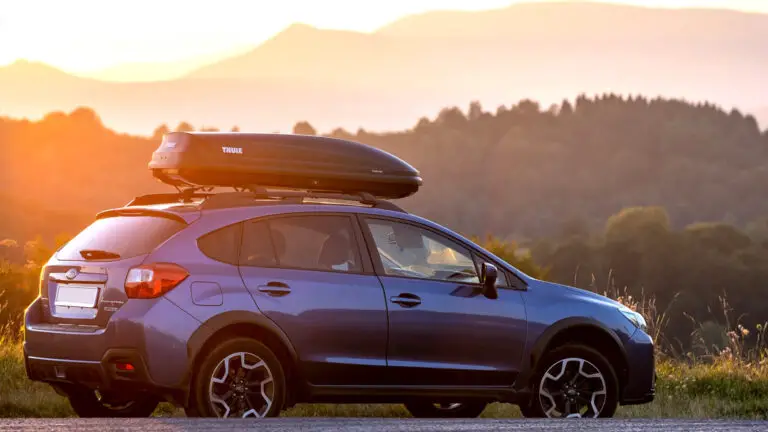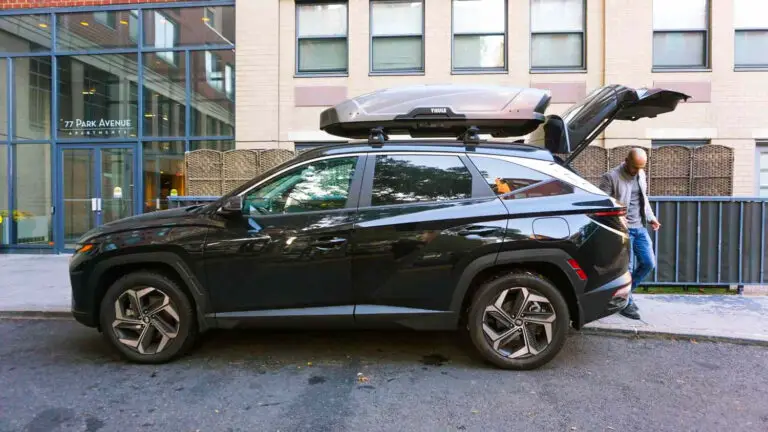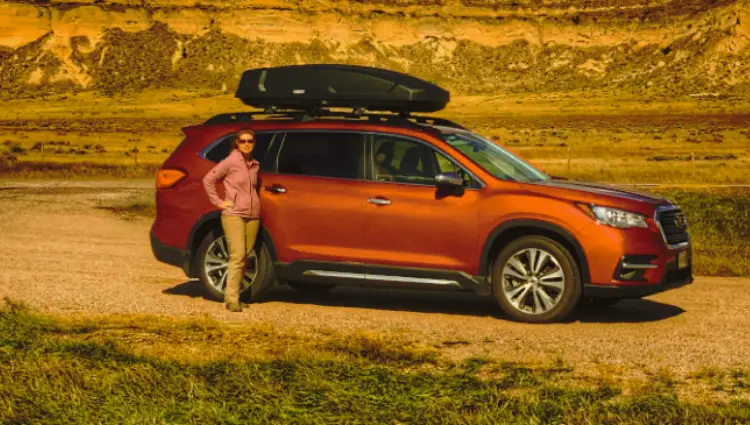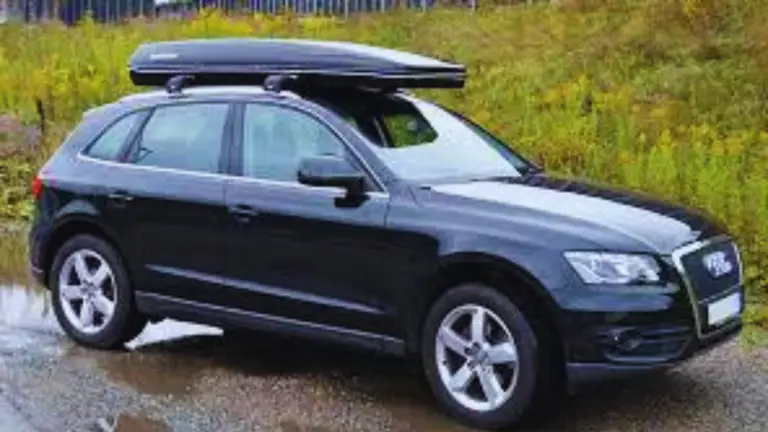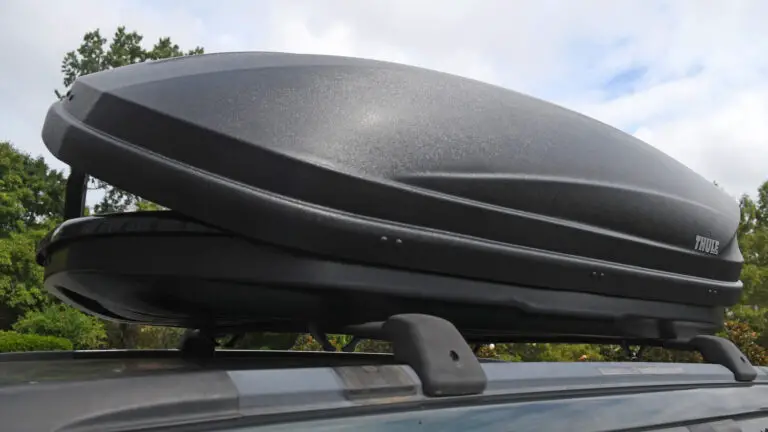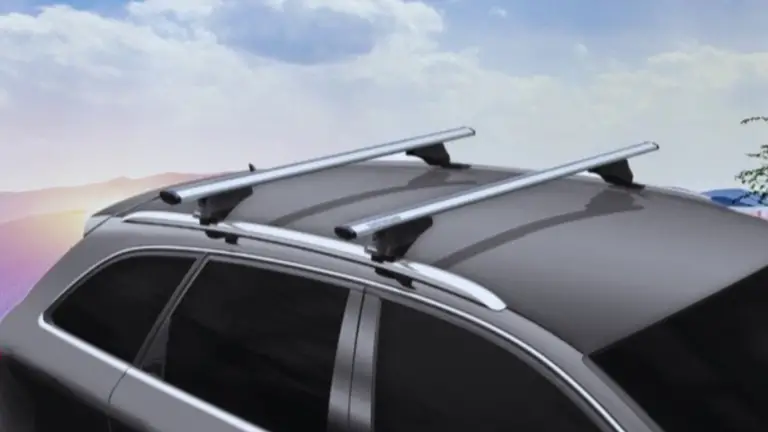Welcome to “The Complete Guide to Roof Boxes: Maximizing Storage and Convenience for Your Travels.” Whether you’re planning a road trip, embarking on an outdoor adventure, or simply need extra storage space for your belongings, a roof box can be a game-changer. This comprehensive guide is designed to equip you with the knowledge and insights needed to understand, select, and make the most of this valuable accessory.
Roof boxes are versatile cargo carriers that attach securely to the roof of your vehicle, providing additional storage capacity without compromising interior space. They come in various sizes, shapes, and designs to accommodate different needs and preferences. With a roof box, you can conveniently transport luggage, sports equipment, camping gear, and other bulky items, ensuring a comfortable and organized journey.
“The Complete Guide to Roof Boxes” covers all aspects of these practical accessories. We’ll start by defining the purpose and benefits of roof boxes, exploring how they can enhance your travel experiences. We’ll delve into the different types of roof boxes available in the market, considering factors such as materials, aerodynamics, and ease of use.
Selecting the right size and capacity is crucial when choosing a roof box, and we’ll provide you with expert tips and considerations to ensure a perfect fit for your needs. We’ll discuss maintenance guidelines to keep your roof box in optimal condition, as well as installation procedures to guarantee a secure and stable attachment to your vehicle.
Safety is paramount when using a roof box, and we’ll outline important considerations to ensure a safe and hassle-free journey. From weight distribution and proper loading techniques to addressing wind resistance and height restrictions, we’ll guide you through the essential safety practices.
To enhance the functionality of your roof box, we’ll explore a range of top accessories and add-ons that can elevate your experience. Whether it’s cargo nets for securing loose items, storage bags for protection, or lift assist systems for easier loading, we’ll present you with options to optimize your roof box’s capabilities.
By the end of this guide, you’ll be equipped with the knowledge and confidence to choose the right roof box, install it correctly, and utilize it effectively for your travels. So, let’s dive into “The Complete Guide to Roof Boxes” and unlock the potential of maximizing storage and convenience for your journeys. Get ready to embark on your next adventure with peace of mind and ample space to bring everything you need along for the ride.
Table of Contents
ToggleWhat is a Roof Box?
A roof box, also known as a cargo box or rooftop cargo carrier, is an external storage container that is mounted on the roof of a vehicle. It is designed to provide additional space for carrying luggage, equipment, and other items, especially when the interior of the vehicle is limited or when you want to free up space inside the car for passengers.
The primary purpose of a roof box is to maximize storage capacity and convenience for travelers, outdoor enthusiasts, and anyone who requires extra space for transporting belongings. Roof boxes are particularly popular among road trip enthusiasts, campers, skiers, and families who need to carry bulky items or a large amount of gear.
The key advantage of using a roof box is that it allows you to significantly expand the storage capacity of your vehicle without sacrificing passenger comfort. By utilizing the space on the roof, you can carry items that may not fit in the trunk or cabin, such as camping gear, sports equipment, strollers, coolers, luggage, and even bicycles or skis. This extra space enables you to bring along everything you need for your adventures and ensures a more comfortable journey for everyone inside the vehicle.
Roof boxes offer several benefits that make them a practical choice for travelers. Firstly, they provide protection for your belongings. Most roof boxes are constructed with durable materials that can withstand various weather conditions, including rain, snow, and UV exposure. They also offer improved security features, such as lockable lids, to keep your items safe from theft or unauthorized access.
Another advantage of roof boxes is their aerodynamic design. Modern roof boxes are engineered to minimize wind resistance and drag, reducing the impact on your vehicle’s fuel efficiency. This feature helps to maintain better gas mileage and reduces the overall cost of your travels.
Additionally, roof boxes are versatile and compatible with a wide range of vehicles. They can be attached to different types of roof racks or crossbars, allowing you to install them on sedans, SUVs, minivans, or even some smaller cars. Roof boxes come in various sizes and shapes to accommodate different vehicle models and storage needs, ensuring a customized fit for your specific requirements.

Benefits of Owning a Roof Box
Owning a roof box provides numerous benefits that enhance your travel experiences and make transportation more convenient. Here are some expanded benefits of owning a roof box:
1. Increased Storage Capacity:
One of the primary advantages of a roof box is the significant increase in storage space it offers. By utilizing the roof of your vehicle, you can carry large or bulky items that wouldn’t fit inside the car, such as camping gear, skis, snowboards, surfboards, fishing equipment, or extra luggage. This expanded storage capacity allows you to bring along everything you need for your adventures, making road trips and outdoor activities more enjoyable.
2. Enhanced Passenger Comfort:
With a roof box, you can free up valuable interior space in your vehicle, ensuring a more comfortable ride for passengers. Instead of cramming bags, equipment, or other items inside the cabin, you can conveniently store them in the roof box, leaving ample legroom and seating space. This is particularly beneficial for long journeys or when traveling with a group of people, providing everyone with more comfort and reducing the feeling of clutter inside the vehicle.
3. Organized and Easy Access:
A roof box helps you stay organized and allows for easy access to your belongings. Instead of digging through a packed trunk or searching under seats for items, you can neatly arrange your gear in the roof box, making it easily accessible whenever you need something. Some roof boxes even come with dual-side opening, allowing you to access your items from either side of the vehicle, further enhancing convenience.
4. Improved Vehicle Safety:
Roof boxes are designed with safety in mind. They are constructed using durable and weather-resistant materials, protecting your belongings from adverse weather conditions like rain, snow, or dust. Additionally, many roof boxes feature secure locking systems to safeguard your items from theft or unauthorized access. This added security provides peace of mind, especially when leaving your vehicle unattended during stops or overnight stays.
5. Fuel Efficiency and Aerodynamics:
Modern roof boxes are aerodynamically designed to minimize wind resistance and drag. Their sleek shape helps reduce the impact on your vehicle’s aerodynamics, resulting in improved fuel efficiency. By reducing wind resistance, the roof box helps your vehicle maintain better gas mileage, saving you money on fuel costs during your travels.
6. Versatility and Multi-Purpose Use:
Roof boxes are incredibly versatile and can be used for various purposes beyond travel. For example, they can serve as additional storage for everyday commuting, allowing you to transport items like groceries, sports equipment, or even large purchases. This versatility makes a roof box a valuable investment that adds practicality to your day-to-day life.
7. Easy Installation and Removal:
Most roof boxes are designed for easy installation and removal, making them convenient to use whenever you need them. They can be attached to roof racks or crossbars using a simple mounting system, and many models feature quick-release mechanisms for effortless installation or removal. This user-friendly design ensures that you can quickly set up or remove the roof box as needed, without requiring advanced technical knowledge or tools.

Types of Roof Boxes
When it comes to roof boxes, there are various types available, each offering unique features and benefits. Here’s an expanded overview of the different types of roof boxes:
1. Hard-Shell Roof Boxes:
Hard-shell roof boxes are made of rigid and durable materials such as fiberglass, ABS plastic, or high-density polyethylene (HDPE). They feature a solid structure with a sturdy frame, offering excellent protection for your belongings. Hard-shell roof boxes provide enhanced security, as they typically come with lockable lids to keep your items safe from theft or unauthorized access. These boxes are resistant to weather conditions, including rain, snow, and UV exposure, ensuring that your belongings remain protected and intact. They are also designed to be aerodynamic, reducing wind resistance and improving fuel efficiency. Hard-shell roof boxes are ideal for long trips, outdoor adventures, and transporting valuable or fragile items.
2. Soft-Shell Roof Boxes:
Soft-shell roof boxes, also known as cargo bags, are made of high-quality, weather-resistant fabric materials such as nylon or PVC-coated polyester. These boxes are lightweight and flexible, allowing for easy storage when not in use. Soft-shell roof boxes are often more affordable than their hard-shell counterparts and provide a good amount of storage space. They are typically designed to be foldable and compact, making them easy to store in your vehicle’s trunk or garage. Soft-shell roof boxes are suitable for carrying clothing, camping gear, and other soft or non-fragile items. However, it’s important to note that soft-shell boxes may offer slightly less protection against impacts or potential theft compared to hard-shell boxes.
3. Rooftop Cargo Baskets:
Rooftop cargo baskets are an alternative option to traditional enclosed roof boxes. Instead of a fully enclosed container, they consist of an open framework or basket-like structure, allowing for easy loading and access to items. Cargo baskets provide ample space for carrying large, bulky items such as camping gear, sports equipment, or irregularly shaped loads. They are often compatible with roof racks or crossbars and can be secured using straps or bungee cords. Cargo baskets offer excellent versatility, as they allow you to secure items of various sizes and shapes, making them ideal for outdoor enthusiasts or those who require more flexibility in loading.
4. Specialty Roof Boxes:
In addition to the standard hard-shell, soft-shell, and cargo basket options, there are specialty roof boxes available to cater to specific needs. These may include:
– Ski and Snowboard Roof Boxes: These roof boxes are designed with specialized features to securely carry skis, snowboards, and related equipment. They often have long and narrow profiles, accommodating multiple sets of skis or snowboards while still providing space for other items.
– Kayak and Canoe Roof Boxes: These boxes are specifically designed to transport kayaks, canoes, or other watercraft. They usually have a longer and more elongated shape to accommodate the length of the boats and provide secure attachment points for safe transport.
– Bike Roof Boxes: These roof boxes are designed to carry bicycles, offering a secure and protective space for transporting your bikes. They may include built-in fork mounts or wheel mounts to keep the bikes stable during transit.
– Hybrid Roof Boxes: Some roof boxes combine the features of hard-shell and soft-shell designs, offering a flexible and durable storage solution. These hybrid boxes often feature a reinforced soft fabric body with a rigid base and frame, providing a balance between lightweight and protective storage.
Choosing the right type of roof box depends on your specific needs, the type of items you plan to transport, and your budget. Consider factors such as storage capacity, security features, weather resistance, and ease of installation when making your selection.
Selecting the Right Size and Capacity:
Selecting the right size and capacity for your roof box is crucial to ensure it meets your storage needs and is compatible with your vehicle. Here’s an expanded guide on how to choose the appropriate size and capacity for your roof box:
1. Consider Your Storage Needs:
First, assess your storage requirements by determining what items you plan to transport in the roof box. Make a list of the belongings you typically carry on trips or outdoor adventures, such as luggage, camping gear, sports equipment, or other bulky items. This will give you a better idea of the amount of space you need.
2. Check Your Vehicle’s Roof Space and Weight Capacity:
Measure the available space on your vehicle’s roof to determine the maximum dimensions your roof box can be. Consider any potential obstructions like roof racks, antennas, or sunroofs that might affect the size and placement of the box. Additionally, check your vehicle’s roof weight capacity, which is usually specified in the owner’s manual or by the manufacturer. It’s crucial not to exceed this weight limit to ensure safe and secure transportation.
3. Consider the Shape and Design:
Roof boxes come in various shapes and designs, including long and narrow, short and wide, or taller models. The shape you choose should be based on your specific storage needs and the type of items you plan to transport. For example, long and narrow boxes are ideal for carrying skis or snowboards, while taller boxes provide more space for bulky items like camping gear or strollers.
4. Evaluate the Box’s Volume or Capacity:
Roof boxes are typically measured in terms of volume or capacity, usually in liters or cubic feet. The volume indicates the total amount of space available inside the box. Consider the overall volume and compare it to the items you plan to transport. Keep in mind that it’s better to have a bit of extra space rather than not enough. A roof box with a larger capacity gives you flexibility for future trips or the ability to pack additional items.
5. Consider Weight Distribution and Roof Load Limit:
Ensure that the weight of the loaded roof box, combined with the items inside it, does not exceed your vehicle’s roof load limit. It’s essential to distribute the weight evenly to maintain vehicle stability and avoid any strain on the roof rack or roof bars. Consider how the weight will impact your vehicle’s handling and braking, especially during turns or emergency maneuvers.
6. Take into Account Aerodynamics and Fuel Efficiency:
Remember that a larger or taller roof box may impact your vehicle’s aerodynamics and fuel efficiency more than a smaller, sleeker model. While it’s important to choose a box that meets your storage needs, be mindful of the potential impact on your vehicle’s performance. Some roof boxes are designed with aerodynamic features to reduce wind resistance and minimize the effect on fuel consumption.
7. Read Manufacturer Guidelines and Recommendations:
Consult the manufacturer’s guidelines and recommendations for your specific roof box model. They often provide detailed information on the ideal vehicle compatibility, recommended load limits, and any specific considerations or restrictions. Following these guidelines ensures the optimal and safe use of your roof box.
By considering these factors and evaluating your specific storage requirements, vehicle limitations, and aerodynamic considerations, you’ll be able to select the right size and capacity for your roof box. Remember to prioritize safety, compatibility, and functionality to make the most out of your roof box investment.
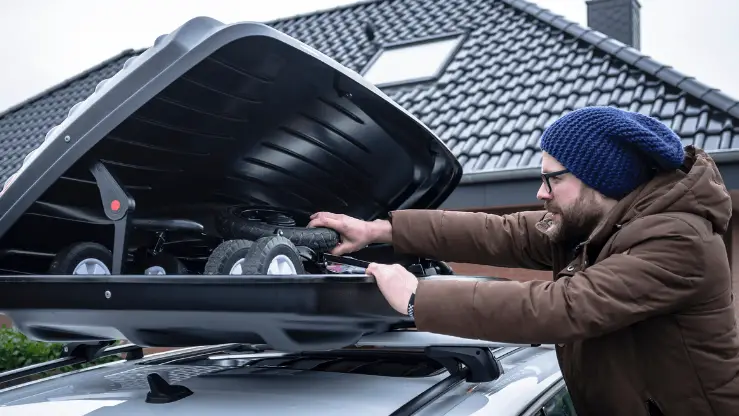
Roof Box Installation
Proper installation of a roof box is essential to ensure its stability, safety, and functionality during your travels. Here’s an expanded guide on roof box installation:
1. Gather the Necessary Equipment:
Before you begin the installation process, gather all the necessary equipment and tools. This typically includes the roof box itself, roof racks or crossbars (if not already installed), mounting hardware (provided with the roof box), any necessary adapters or accessories, and the appropriate tools such as wrenches or screwdrivers.
2. Prepare the Roof Rack or Crossbars:
If your vehicle already has roof racks or crossbars installed, ensure they are properly positioned and tightened. If you don’t have roof racks or crossbars, you’ll need to install them following the manufacturer’s instructions. Check the weight capacity of the roof rack or crossbars to ensure they can support the weight of the roof box and your cargo.
3. Position the Roof Box:
Carefully lift the roof box and place it onto the roof racks or crossbars. Ensure that the box is centered and positioned correctly on the roof. It should be aligned with the vehicle’s centerline and sit securely on the roof rack or crossbars without any overhang or instability. Follow any specific guidelines provided by the roof box manufacturer regarding positioning and alignment.
4. Attach the Mounting Hardware:
Securely attach the mounting hardware provided with the roof box to the designated attachment points on the box. This may involve tightening screws, bolts, or other fasteners to ensure a secure connection. Follow the manufacturer’s instructions regarding the specific installation steps and torque specifications for the mounting hardware. Ensure that all the hardware is tightened properly, but avoid over-tightening, as it may cause damage to the roof box or the vehicle’s roof.
5. Adjust and Secure the Roof Box:
Once the mounting hardware is in place, make any necessary adjustments to ensure the roof box is level and aligned symmetrically on the roof. Some roof boxes have adjustable clamps or brackets that can be moved to accommodate different roof rack or crossbar spacing. Ensure that the box is securely fastened to the roof racks or crossbars using the provided clamps, straps, or locking mechanisms. Double-check that all attachment points are properly secured and tightened.
6. Test the Installation:
After the roof box is installed, conduct a careful visual inspection to ensure that it is securely attached and there are no visible signs of instability. Give the roof box a gentle shake to check for any excessive movement or looseness. If necessary, make further adjustments or tighten the mounting hardware. Additionally, refer to the roof box manufacturer’s guidelines regarding weight limits and restrictions to ensure that you don’t exceed the recommended load capacity.
7. Verify Clearance and Accessibility:
Before hitting the road, ensure that the roof box does not obstruct any important features of your vehicle, such as antennas, sunroofs, or rearview mirrors. Check that there is sufficient clearance between the roof box and the vehicle’s roof, especially when opening doors or accessing the trunk. Ensure that you can easily access and operate any locks, latches, or opening mechanisms of the roof box.
8. Follow Additional Recommendations:
Some roof box manufacturers may have specific recommendations or guidelines for installation, such as the use of additional accessories, security measures, or adjustments based on your specific vehicle model. Be sure to consult the manufacturer’s instructions and follow any additional recommendations they provide.
By carefully following these installation steps and adhering to the manufacturer’s guidelines, you can ensure a secure and proper installation of your roof box. Remember to periodically check the installation during your trips to ensure that the roof box remains stable and secure.
Roof Box Maintenance
Proper maintenance of your roof box is essential to ensure its longevity, functionality, and safety. Here’s an expanded guide on roof box maintenance:
1. Regular Cleaning:
Clean your roof box regularly to remove dirt, grime, and debris that may accumulate during use. Use mild soapy water or a dedicated roof box cleaner and a soft sponge or cloth to gently scrub the exterior surfaces. Rinse thoroughly with clean water and dry it properly before storage. Avoid using abrasive cleaners, solvents, or rough materials that could scratch or damage the box.
2. Check for Damage:
Regularly inspect your roof box for any signs of damage or wear. Look for cracks, dents, or scratches on the exterior, as well as loose or damaged hardware. If you notice any damage, address it promptly. Small cracks can often be repaired using appropriate adhesives or sealants, while significant damage may require professional assistance or replacement.
3. Lubricate Moving Parts:
If your roof box has hinges, locks, or other moving parts, lubricate them periodically to ensure smooth operation. Use silicone-based lubricants or products recommended by the manufacturer. Apply a small amount of lubricant to the hinges, locks, and other areas that require movement. Be cautious not to over-lubricate or use products that attract dirt or dust.
4. Inspect and Clean Seals:
Check the seals or gaskets around the edges of your roof box for any signs of wear, cracking, or deterioration. These seals are crucial for keeping your items protected from water, dust, and other elements. Clean the seals regularly with a mild detergent and water solution, and ensure they are properly aligned and making a tight seal when the box is closed.
5. Secure Mounting Hardware:
Inspect the mounting hardware, such as clamps, brackets, or straps, to ensure they are secure and in good condition. Tighten any loose hardware following the manufacturer’s instructions. Replace any damaged or worn-out mounting components to maintain a secure attachment between the roof box and your vehicle.
6. Store Properly:
When not in use, store your roof box in a clean, dry, and protected area. If possible, keep it indoors to shield it from extreme weather conditions, sunlight, and potential damage. If storing it outdoors, use a protective cover designed specifically for roof boxes to shield it from UV exposure, dust, and moisture.
7. Follow Manufacturer Guidelines:
Always refer to the manufacturer’s specific maintenance instructions and guidelines provided with your roof box. They may have additional recommendations or precautions specific to your model. Follow their guidelines regarding weight limits, cleaning products, maintenance schedules, and any other instructions to ensure proper care of your roof box.
8. Periodic Inspection and Testing:
Perform regular inspections of your roof box before and after each trip. Check the mounting system, locks, and overall condition. Before embarking on a journey, conduct a test drive to ensure the roof box is securely attached and doesn’t create any unusual noise or vibrations. Monitor it during the trip to ensure it remains secure and stable.
By following these maintenance practices, you can keep your roof box in optimal condition, extend its lifespan, and ensure safe and reliable usage. Regular cleaning, inspection, and proper storage will help you get the most out of your roof box and enhance your overall travel experience.

Safety Considerations
When using a roof box, it’s important to prioritize safety to ensure a secure and enjoyable travel experience. Here are some expanded safety considerations to keep in mind:
1. Weight Distribution: Distribute the weight evenly inside the roof box to maintain proper balance and stability. Avoid overloading one side or corner, as it can affect your vehicle’s handling and stability. Place heavier items closer to the vehicle’s centerline and lighter items towards the outer edges. Follow the weight limits specified by the roof box manufacturer and your vehicle’s roof rack or crossbars.
2. Securely Fasten the Roof Box: Double-check that the roof box is securely fastened to the roof racks or crossbars using the provided mounting hardware. Ensure that all attachment points are properly tightened and locked according to the manufacturer’s instructions. Periodically check the roof box during your journey to ensure it remains tightly secured.
3. Clearance and Accessibility: Ensure that the roof box does not obstruct your field of vision or any important features of your vehicle, such as antennas, sunroofs, or rearview mirrors. Verify that there is sufficient clearance between the roof box and the vehicle’s roof, especially when opening doors or accessing the trunk. Maintain access to important vehicle functions and controls.
4. Height Restrictions: Be aware of any height restrictions imposed by bridges, tunnels, parking structures, or other infrastructure along your route. Measure the overall height of your vehicle, including the roof box, to ensure you can safely pass under low-clearance obstacles. Plan your route accordingly to avoid any potential hazards or restrictions.
5. Driving Considerations: Adjust your driving behavior to account for the added height and weight of the roof box. Keep in mind that the increased height can affect the vehicle’s aerodynamics, making it more susceptible to crosswinds. Drive at moderate speeds and maintain a safe distance from other vehicles. Be cautious when changing lanes or passing other vehicles, as the increased height can impact maneuverability.
6. Regular Inspection: Periodically inspect the roof box and its mounting system during your journey to ensure it remains secure and in good condition. Check for any signs of loosening, shifting, or damage. If you notice any issues, find a safe place to stop and address them before continuing your trip.
7. Weather Conditions: Consider the impact of weather conditions on your roof box and driving safety. High winds, heavy rain, or snowy conditions can affect the stability of the roof box and your vehicle’s handling. Adapt your driving accordingly and, if necessary, consider removing the roof box or adjusting your travel plans to ensure safety.
8. Parking Height Restrictions: Be mindful of parking height restrictions in parking garages, underground structures, or other areas where the added height of the roof box may pose challenges. Park in areas that accommodate the height of your vehicle, ensuring safe entry and exit without causing any damage to the roof box or the structure.
9. Regular Maintenance: Regularly inspect and maintain your roof box to ensure its optimal functionality and safety. Follow the manufacturer’s guidelines for cleaning, lubrication, and general maintenance. Address any signs of wear, damage, or deterioration promptly to prevent potential issues during your travels.
10. Follow Local Regulations: Familiarize yourself with local laws and regulations regarding the use of roof boxes, including any specific requirements for securing and displaying additional warning signs or markers. Adhere to all applicable traffic rules and regulations to ensure safe and legal use of the roof box.
By considering these safety considerations and adhering to proper installation, loading, and driving practices, you can ensure a safe and secure experience when using a roof box. Prioritizing safety will help you enjoy your travels while minimizing any risks or hazards associated with roof box usage.
Top Accessories and Add-ons
When using a roof box, there are various accessories and add-ons available that can enhance its functionality, convenience, and overall utility. Here are some expanded top accessories and add-ons for roof boxes:
1. Roof Box Storage Bag: A roof box storage bag is designed to store and protect your roof box when it’s not in use. It helps keep the roof box clean and dust-free while providing a convenient storage solution. These bags often feature handles or shoulder straps for easy transportation.
2. Roof Box Cargo Nets: Cargo nets are useful accessories for securing loose items inside the roof box. They prevent items from shifting or sliding during transportation, ensuring that your belongings stay organized and protected. Cargo nets are available in various sizes and configurations to suit different roof box models.
3. Roof Box Organizer: A roof box organizer helps maximize the available space inside the box. It typically consists of dividers, compartments, or removable trays that allow you to separate and organize your items effectively. This helps keep your belongings secure, prevents damage, and makes it easier to find what you need during your trip.
4. Roof Box Straps: Additional straps can be handy for securing bulky or irregularly shaped items inside the roof box. These straps provide extra stability and ensure that your belongings are tightly secured. Look for durable and adjustable straps that are compatible with your roof box and provide a reliable hold.
5. Roof Box Lift Assist: Roof box lift assist systems are designed to make it easier to load and unload the box. These accessories typically consist of gas struts or mechanical lift mechanisms that assist in lifting the roof box, reducing the physical effort required. They are particularly helpful if you frequently need to access or load heavy items into the roof box.
6. Ski and Snowboard Racks: If you enjoy winter sports, ski and snowboard racks are essential accessories. These racks are designed to securely transport skis, snowboards, and related equipment on the roof of your vehicle. They provide a safe and convenient way to carry winter gear, allowing you to free up space inside the roof box for other items.
7. Roof Box Lights: Roof box lights are auxiliary lights that can be attached to the roof box to enhance visibility during nighttime or low-light conditions. They provide additional safety by making your vehicle and roof box more visible to other drivers on the road.
8. Roof Box Locks and Security Systems: Security is crucial when using a roof box. Additional locks and security systems provide an extra layer of protection against theft or unauthorized access to your belongings. Consider using lockable straps, padlocks, or integrated locking systems that are specifically designed for roof boxes.
9. Roof Box Wind Deflectors: Wind deflectors are aerodynamic accessories that can be mounted on the front edge of the roof box. They help reduce wind noise, minimize drag, and improve fuel efficiency by redirecting airflow around the box. Wind deflectors also help prevent excessive wind resistance, making your journey quieter and more comfortable.
10. Roof Box Roof Rack Extensions: If you require additional storage space beyond the capacity of your roof box, roof rack extensions can be a practical solution. These extensions increase the load-carrying capacity of your roof rack, allowing you to attach additional accessories or cargo carriers alongside the roof box.
When considering accessories and add-ons for your roof box, ensure compatibility with your specific roof box model and vehicle. Always follow the manufacturer’s guidelines and instructions for installation and usage to ensure proper functionality and safety.
Expert Product Recommendations
When it comes to selecting a roof box, there are numerous options available from various manufacturers. Here are some expert product recommendations to consider when choosing a roof box:
1. Thule Motion XT

Thule is a well-known and trusted brand in the roof box industry, and their Motion XT series offers a range of high-quality options. These roof boxes are known for their sleek design, aerodynamics, and durability. They come in different sizes and have convenient features such as dual-side opening, easy-mount system, and secure locking mechanisms.
What we like
- Sleek design and aerodynamics
- Durable construction
- Dual-side opening
- Easy-mount system and secure locking mechanisms
What we don't like
- Higher price range
2. Yakima SkyBox

Yakima is another reputable brand known for producing top-notch roof boxes, and the SkyBox series is a popular choice among outdoor enthusiasts. These roof boxes are rugged, spacious, and user-friendly. They offer a variety of sizes and features, including dual-side opening, easy installation, and a super latch security system.
What we like
- ugged and spacious design
- User-friendly features
- Dual-side opening and easy installation
- Super latch security system
What we don't like
- Some models may be expensive
3. Thule Force XT

The Thule Force XT series is designed to offer a balance between functionality, durability, and affordability. These roof boxes are available in different sizes and provide ample storage space for your gear. They feature a secure lock system, dual-side opening, and compatibility with various roof rack systems.
What we like
- Balance of functionality, durability, and affordability
- Secure lock system
- Dual-side opening and compatibility with various roof racks
What we don't like
- Limited size options
4. Yakima Showcase

The Yakima Showcase series is known for its sleek and aerodynamic design, providing excellent performance on the road. These roof boxes are easy to install and use, with features like dual-side opening, push-button access, and a built-in torque indicator for secure installation. They offer a range of sizes and are made from durable materials to withstand various weather conditions.
What we like
- Sleek and aerodynamic design
- Easy installation and push-button access
- Built-in torque indicator for secure installation
What we don't like
- Relatively higher price point
5. SportRack Vista XL
What we like
- Budget-friendly option
- Generous storage capacity
- Sturdy construction
What we don't like
- Single-side opening only
6. Thule Pulse
What we like
- Reliable and affordable
- Easy installation and loading
- Secure locking system
What we don't like
- Single-side opening only
7. INNO Wedge

The INNO Wedge series is known for its sleek design and aerodynamic shape, minimizing wind resistance and noise. These roof boxes offer ample storage space and are compatible with most roof rack systems. They feature dual-side opening and secure locking mechanisms and are made from high-quality materials for durability.
What we like
- Sleek design and aerodynamics
- Ample storage space
- Dual-side opening
What we don't like
- Limited size options
8. Rhino-Rack Master Fit

Rhino-Rack is a trusted brand in the automotive accessories market, and their Master Fit series delivers reliable roof boxes. These boxes are designed for easy installation and removal, and they provide a secure and spacious storage solution. They feature dual-side opening, a secure locking system, and are built to withstand tough conditions.
What we like
- Easy installation and removal
- Secure and spacious storage
- Dual-side opening and secure locking system
What we don't like
- Limited availability and model options
Guide to Roof Boxes: Final Thoughts
Roof boxes give storage space to your automobile without taking up interior space. To meet diverse needs, they come in varying sizes, shapes, and patterns. A roof box makes transporting baggage, sports gear, camping gear, and other bulky goods easy and tidy.
“The Complete Guide to Roof Boxes” includes everything about these useful extras. We’ll start by explaining roof boxes and how they might improve travel. We’ll compare roof boxes based on materials, aerodynamics, and usability.
We’ll provide you experienced advice on roof box size and capacity to ensure a great fit. We’ll cover roof box maintenance and installation to ensure a solid fit.
We’ll discuss roof box safety to ensure a smooth trip. We’ll help you with weight distribution, loading, wind resistance, and height constraints.
We’ll look at top roof box accessories to improve your experience. We’ll offer cargo nets, storage bags, and lift assist systems to maximize your roof box’s potential.
This tutorial will help you choose, install, and use a roof box for your trips. Let’s explore “The Complete Guide to Roof Boxes” and maximize your travel storage and convenience. Prepare for your next adventure with confidence and enough space to pack everything you need.



